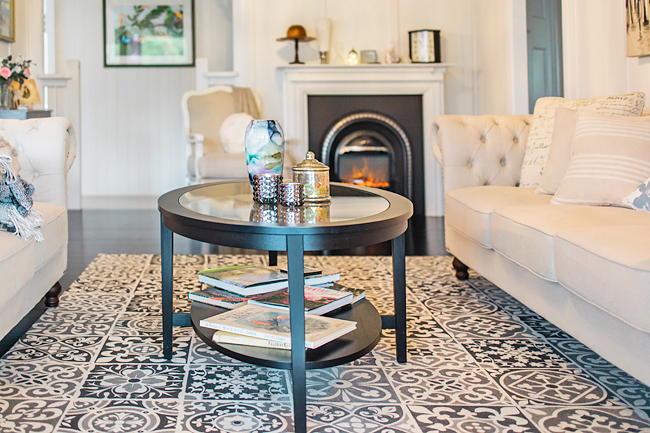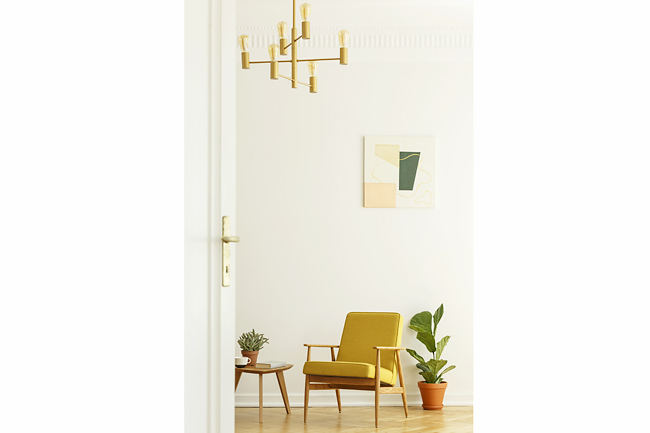Jennifer Barger
THE WASHINGTON POST – Anyone who has stepped into a mirrored dressing room has experienced how design tricks can make a tiny space feel larger. “It’s more about perception than reality,” said chair of interior design and preservation design at the Savannah College of Art and Design Chi-Thien “CT” Nguyen.
“You want to do things that give the impression of more air and room.” The ways pros visually and mentally expand spaces can be both obvious (declutter) and surprising (dark walls).
Here’s how to make a small room look – and feel – bigger:
PAINT THE ENTIRE ROOM THE SAME COLOUR
The old rule about painting your ceiling white and your walls a different colour doesn’t apply if your goal is to visually expand a room.
“You want to create an envelope of space in a small room, so use the same colour paint from your baseboards to the ceiling,” said DC interior designer Kīyonda Powell. “That takes away from the hard-defined plane that happens if you just paint a wall some bright colour.”
Some pros favor using lighter paint colours, the better to mimic – or reflect – natural light. But other designers embrace dark and dramatic colours, theorizing that four walls (and a ceiling) of a deep shade such as navy can summon up “a sort of vastness in a space, where you don’t see a focal point and don’t know where the room’s boundaries are”, said Nguyen.


HANG OVERSIZE ART
Take a cue from Broadway sets and visually extend your space with a wall mural, an oversize landscape painting, or a big photograph of clouds or a seascape.
“You’ll feel like you’re walking into the scene,” said Manhattan interior designer Kati Greene Curtis.
Wallpaper, particularly “ground” prints, which depict interlocking flowers or Chinese-style toiles, can have a similarly expansive effect. “It can really blow things up,” said Curtis. Stick to patterns in one or two colours, since a rainbow-hued style could add visual clutter and make a space feel more enclosed.
ADD REFLECTIVE SURFACES
Yes, you know that mirrors obviously make a space appear larger. (“It’s like doubling a room,” said Curtis.) But other reflective surfaces – high-gloss ceiling paint, lacquered furniture, shiny tile on a kitchen backsplash – have a similar effect, both casting light and creating the illusion of volume. Just be sure that there’s either natural or artificial light to give your shiny element something to reflect.
DRAW THE EYE UP
Vertical real estate is valuable in small rooms, not only for storage but to draw the eye upward.
Curtains that are mounted near the ceiling and kitchen cabinets and built-in shelving that extend all the way up a wall create a feeling of expansiveness.
“And even if your ceiling isn’t that high, a tall headboard or vertical stripes on the wall or the curtains brings things up,” said Curtis.
CHOOSE THE RIGHT FURNITURE
Tiny room, tiny furniture? Not so fast. “If you have a small space and a small sofa, tiny table and bitty chair, it’ll look like a dollhouse,” said Kate Watson-Smyth, the British blogger behind Mad About the House and author of the forthcoming small-space design book Home: The Way We Live Now.
Instead, be strategic. You might choose the largest mattress size your small boudoir will hold, but pick a soaring headboard to create the illusion of ceiling height, and forgo a footboard.
Wall-mounted, bedside sconces will eliminate the need to cram in nightstands and lamps.
“The scale becomes key,” said Watson-Smyth. “The more you stuff into a room, the more it’ll seem to close in on you.” In your petite living room, you might go for a full-length sofa, not a love seat, but be sure it has a low profile. The greater the distance between the top of the sofa and the ceiling, the taller and larger your room will feel.
Along the same lines, think leggy and light. A sofa with visible feet will slim down a space more than a skirted sectional. A glass-topped dining table or Lucite end table “creates air in the room and makes everything feel less cluttered”, said Powell.
DON’T SHOVE ALL YOUR FURNITURE AGAINST THE WALL
In a room that is square-footage-challenged, it’s tempting to place all your furniture against the walls to maximise floor space.
“But if you crunch everything up against the wall, it sends the message that there wasn’t enough space to move it forward,” said Watson-Smyth. Instead, feel free to “float” a piece or two, particularly a low-slung sofa or curvy chair. This adds vital air and breathing room to a space. Keep at least 18 inches between your floating piece and other furniture – the right amount of distance, said Curtis, to stop you from running into things and keep the room from appearing too cramped.
KEEP SIGHTLINES OPEN
Above all, don’t block the views in a small space, whether you’ve got big windows or not. You don’t want anything to stop your eye until it either hits a wall or sees some sunlight. If you have a great view, capitalise on it by forgoing window treatments or keeping them simple.
“Blurring the line between outside and in can really expand your space,” said Lisa Tucker Cross, who teaches a course on tiny-house design at the Rhode Island School of Design.
“You can even place a lot of plants near your windows so it feels as if your garden begins inside and simply extends.”







